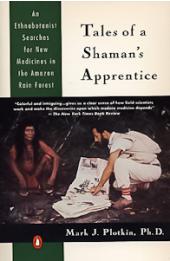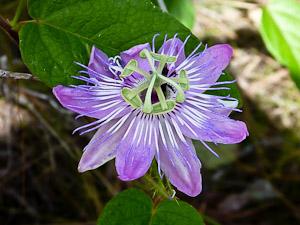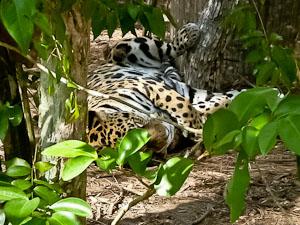

Mark J. Plotkin, the author of the acclaimed non-fiction book Tales of a Shaman’s Apprentice, spent his career as an ethnobotanist – mainly in the largely uncharted rainforests of the northeastern shoulder of South America. During a series of travels to collect medicinal plants from the Amazon, he documented his tales in terms of biology, anthropology, geography, history, mythology and spirituality: an intriguing blend that makes for one of the greatest adventures of the twentieth century.
Plotkin, originally a molecular biology student and University of Pennsylvania college drop-out, began his botanical studies at Harvard’s zoology museum, where he worked as a staff member and subsequently enrolled in several night classes. Here, he encountered the famed and enigmatic Professor Richard Evans Schultes. Considered the father of “Amazonian ethnobotany,” Schultes taught with great enthusiasm about the ways in which people of particular Amazonian regions used local plants for construction purposes, medicine, religious practices, and nourishment. His charismatic and exotic lectures fascinated Plotkin and prompted him to spend twelve years studying the plants and peoples of the northeast Amazon in Brazil, French Guiana, Guyana, Suriname and Venezuela. 
Throughout the book, Plotkin offers detailed insight into the lives, livelihoods and transformations of indigenous Amazonian culture. With every new research assignment, readers are introduced to the various populations of the rainforest – the Maroons, the Tirio, the Waiwai – and with each initiation into a new culture, Plotkin must vie for the acceptance of not only the chiefs, but also a series of increasingly mysterious shamans. His findings are not accumulated without humorous accounts of sickness, stinging insects, tropical fungi and brushes with electric eels – maladies that are readily treated in his host communities. Perhaps the most endearing feature of the book is that although he is largely regarded as the pitied “dim-witted relative” by many of his new friends, Plotkin never wavers from his role as student and observer, a guest who often delights in the amazing feats of the shamans, hunters and wildlife he encounters.
Plotkin's in-depth accounts of medicinal plant knowledge are informative and inspiring. Within his first few days in Suriname, he learns about a plant that, if boiled in tea and taken twice a day, will cure you "te joe habe toomsi soekroe na broedoe" ("if you have too much sugar in your blood"), or what biomedicine calls "diabetes." However, his most fervently sought-after plant data include information about hallucinogens, which he imbibes, black arts, which he witnesses, and the poisons applied to hunting arrows, which he learns to use. Throughout the book, there is rarely a dull moment. His writing style is clear and articulate, which, when coupled with out-of-this-world subject matter, makes for a captivating read. 
Ever the practical optimist, Plotkin has not only translated plant knowledge into native languages and printed books for future generations of indigenous apprentices, he has been active in securing intellectual property rights that would ensure that profits flow from medical products sourced from the Amazon back to indigenous peoples and their countries. He writes, “…these problems are caused by people and therefore I believe the problems can be solved by people”. Let us hope he is right.
Photographs are copyright protected and used with permission of Altaire Cambata. Photos may not be reproduced without permission